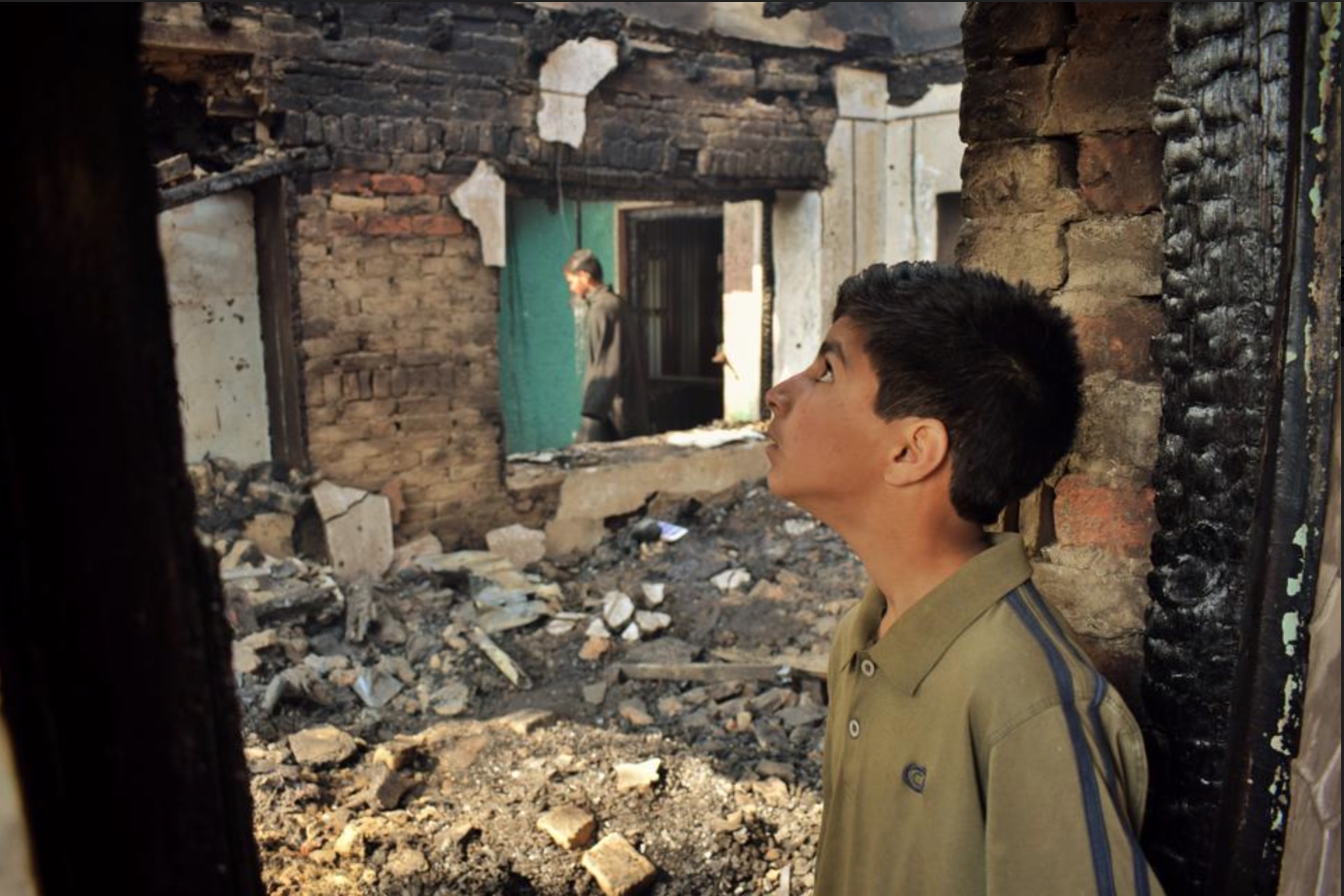On February 15, 19-year-old Adil Dar, a resident of southern Kashmir’s Pulwama district, blew himself up in an explosive-laden car, killing almost 50 Central Reserve Police Force personnel. The suicide attack jolted the entire region, bringing India and Pakistan almost at the brink of war. Armed with nuclear weapons, both countries intruded the de facto Line of Control in Kashmir to attack each other. However, the release of Indian pilot, Wing Commander Abhinandan Varthaman, from Pakistani custody on March 3 has subdued the calls of warmongering.
Since Indian forces landed in Kashmir on October 27, 1948, the State has continued to remain in turmoil. Indian troops have fought three limited wars with Pakistan to claim the region in its entirety. Following the eruption of armed revolt in the early 90s, Indian forces, numbering almost 750,000, are occupying over 430,000 kanals (53,750 acres) of higher altitude lands. There is one military person for every twelve Kashmiris in the State.
In the recent spree of violence, hundreds of civilians and tech-savvy militants faced the brunt of state violence in the form of counter-insurgency operation – Operation All Out. Thousands of youth were harassed, and hundreds of them were taken into custody under the draconian Public Safety Act.
Here is a glimpse of everyday lives, following the Pulwama attack that brought the Kashmir conflict back into international glare:
Indo-Pak Aerial Battle: IAF Plane Crash

On February 27, six air warriors of Indian Air Force, running Mi-17 V5 helicopter, got killed after the aircraft crashed in central Kashmir’s Budgam district. (Photo: Free Press Kashmir/Wasim Nabi)
The reason of the plane crash is contested. While India claimed that it happened due to technical failures, Pakistan claimed to have shot it down in aerial battle. However, as the plane hit the ground, one civilian came under it. “I saw the plane crashing down, I shouted: Run! Everyone started to run, but 20-year-old Kifayat Ganiae froze, perhaps he had a heart attack. And next, we heard was the loudest sound we have ever heard. And then all of a sudden we found ourselves in smoke, unable to think or see anything,” one eyewitness told FPK.
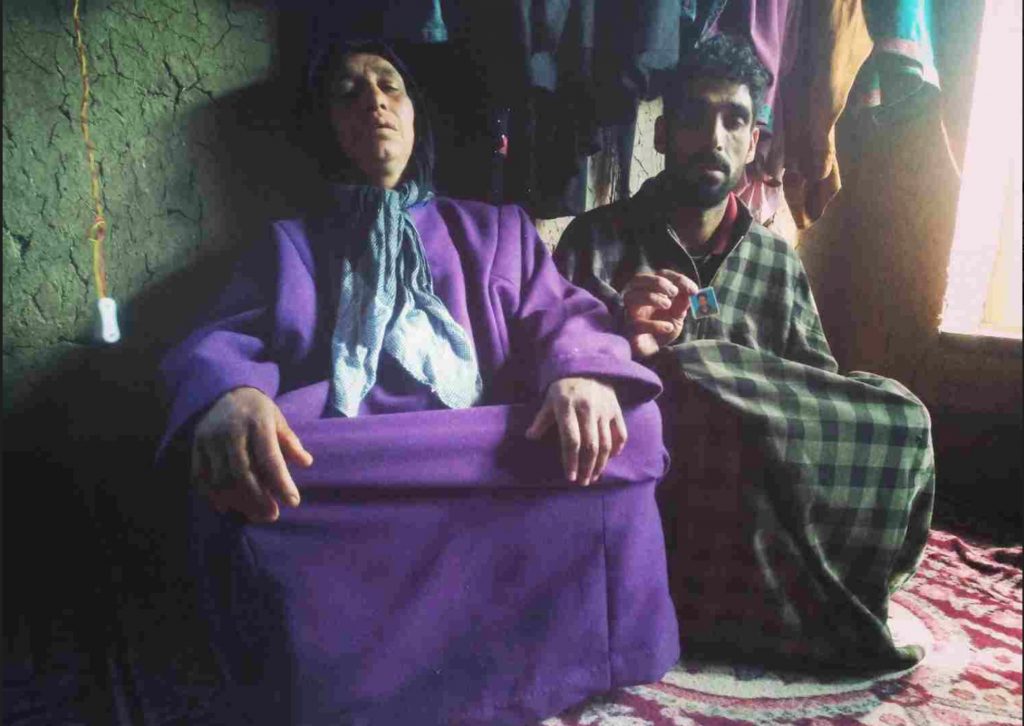
Grieving Zamrooda Ganie, mother of the civilian who was killed in a dreadful crash of the Indian Air Force chopper in central Kashmir’s Budgam district, is yet to come out of the shock of what happened on February 26. (Photo: Free Press Kashmir/Wasim Nabi)
State establishment has offered her compensation of INR 4 lac. But she said that no amount of money can fill her void. “Did my son deserve such a death?,” she asked. According to her relative, the tragic death of Kifayat Ganiae was a simple example of what war-mongering by mainstream media could lead to. “Only commoners living in the State know what it means to face the repercussion of Indo-Pak tensions, but Indian politicians only know how to win elections on body bags,” he said.
Houses Razed to Ground
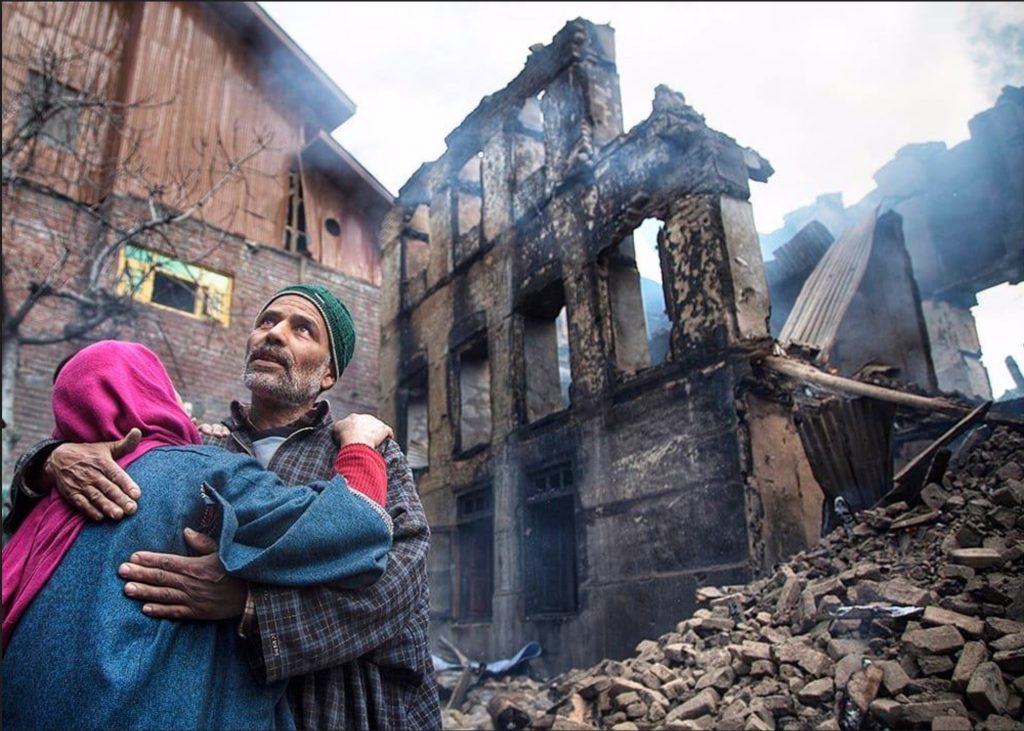
45-year-old civilian Farooq Ahmad was injured and a house was destroyed by Indian forces during the counter-insurgency operation on March 5. (Photo: Javed Dar)
In a statement, the army said that they found two bodies of militants and AK-47s from the debris. Earlier, on February 28, a similar gunfight between militants and army destroyed 14 houses. The gunfight prolonged for 72-hours. “Our home was surrounded by the forces for four days, we had no food to eat and the police did not bother to rescue us,” Farooq Ahmad told reporters. “They did not let us use the toilet. My daughters, who are of marriageable age had to relieve themselves in a bucket provided to us. They took our dignity away.”
Red Cross Signs

Following the escalation of intra-state tension between India and Pakistan, locals were forced to stay awake, fearing the possibility of war. (Photo: Kamran Yusuf)
A local told Peoples Dispatch that sleepless nights are perhaps the most affordable and least dangerous consequence of the Kashmir conflict. The authorities also temporarily suspended the air traffic. Major hospitals in Srinagar district were asked to paint red cross signs on their rooftops, sensing emergency or chances of bombardments. “War mongering in India needs to shut down. In Kashmir, we have not slept in a while, thanks to the jets hovering in the skies non-stop since the last 24-hours, internet slowed down to 2G speed, and the fear of war and destruction [lurks],” researcher Fatimah Kanth wrote on February 26.
Mass Funerals
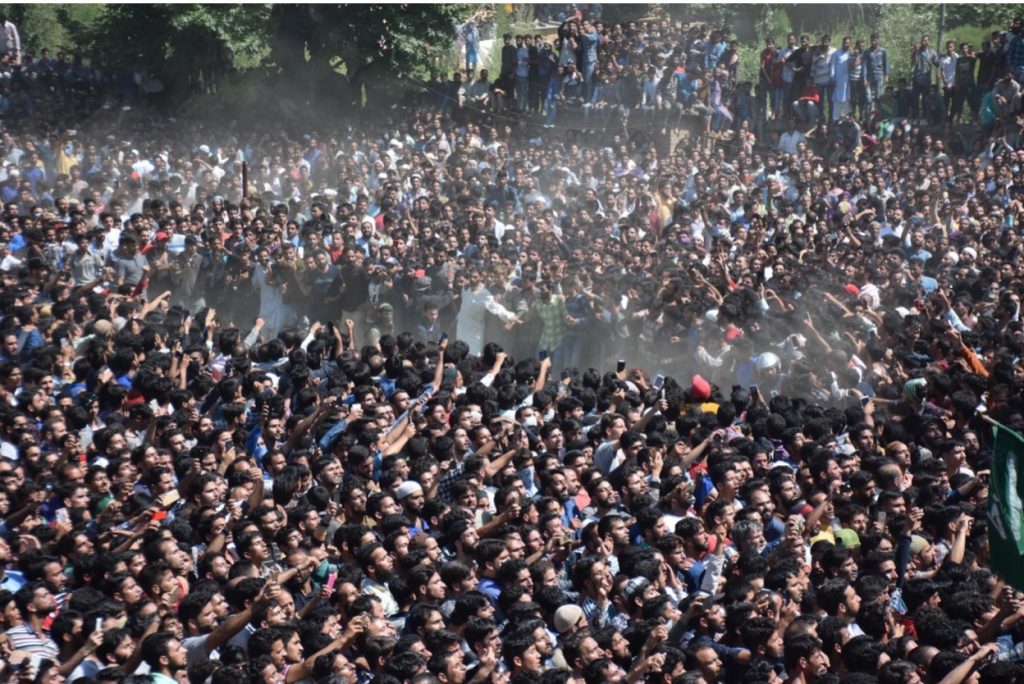
Despite the security restriction, thousands of civilians attended the funeral prayers in absentia, in the Kakapora area of Pulwama, of the young man who blew himself in a suicide attack on February 14. (Photo: Kamran Yusuf)
The trend of masses attending the funeral gathering of fallen militants in thousands started in 2015. When the 21-year-old militant, Burhan Wani, was killed in July 2016, almost five lac people participated in his funeral that continued for days. Today, on every occasion when a militant gets killed in counter-insurgency operations, locals gather in thousands to pray and show their solidarity. According to activists, the massive participation in funerals reinforces the collective narratives. Through such “contentious performances”, people of Kashmir openly make a consequential claim of solidarity not only with each other but also with the larger struggle for freedom or “azaadi”.
Local Resentment
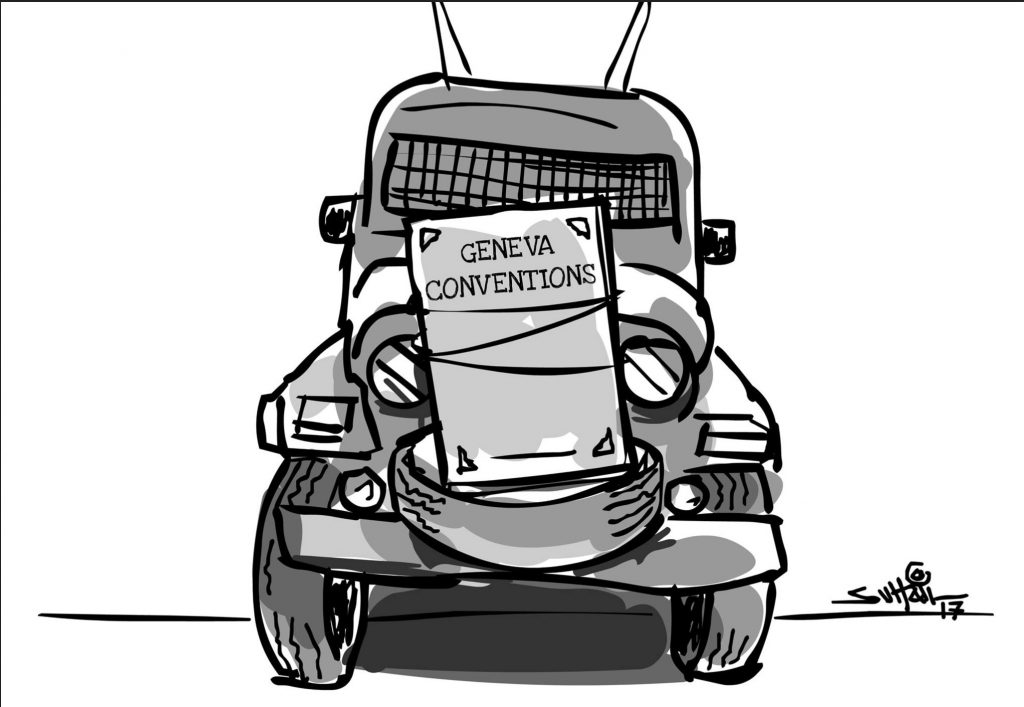
A day after Indian pilot Abhinandan Varthaman was arrested by Pakistani army, Indian External Affairs Ministry released a statement on February 27, saying that “Pakistan displayed the vulgar display of injured personnel in violation of all norms of International Humanitarian Law and the Geneva Convention”. This statement by the Indian government invoked sharp criticism in Indian administered Kashmir, with a number of activists sharing the picture of army vehicle having Geneva Convention written over it. (Cartoon: Suhail H Naqshbandi)
The cartoon is a reminder of the double standards of using laws as per convenience of the State. In April 2017, an Indian Army officer, Major NL Gogoi, used 28-year-old civilian, Farooq Dar, as a human shield by tying him in front of the army vehicle’s bonnet. He was paraded across the town. Indian forces, rather than invoking the case of gross violation of Geneva Conventions or human rights, decided to support the officer responsible for the act.
“In (fact) India in the State of Kashmir has failed to apply not just the Geneva Convention, but much of international law for that matter. Kashmiris are still being jailed on political charges and used as human shields, while the United Nations resolution which mandates a referendum on self-determination to be conducted in Kashmir is yet to be implemented,” Samreen Mushtaq, another research scholar from the Delhi-based Jamia Millia Islamia, said on March 2.


